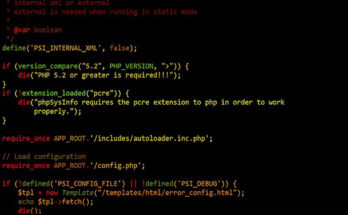
Unlocking the Power of Semantic HTML: An Advanced Tutorial
February 20 , 2024 Imphal By Banti Phurailatpam:
Semantic HTML is not just about structuring your web pages—it’s about conveying meaning, enhancing accessibility, and improving search engine optimization (SEO). In this advanced tutorial, we’ll delve deeper into understanding semantic HTML and explore how it can elevate your web development skills to create more meaningful, accessible, and SEO-friendly web content.
1. Understanding the Importance of Semantic HTML:
Semantic HTML goes beyond merely organizing content—it provides meaning and context to elements on your web page, both for browsers and assistive technologies like screen readers. By using semantic elements such as <header>, <nav>, <main>, <section>, <article>, <aside>, and <footer>, you provide valuable information about the structure and purpose of your content, making it easier for both users and search engines to understand and navigate.
2. Leveraging Semantic Elements:
Semantic elements play a crucial role in structuring your web pages effectively. For example:
- Use <header> to define the introductory content or navigation menu at the top of your page.
- Use <nav> to define navigation links or menus.
- Use <main> to encapsulate the primary content of your page.
- Use <section> to group related content together.
- Use <article> to define self-contained content, such as blog posts or articles.
- Use <aside> to define secondary content, such as sidebars or related links.
- Use <footer> to define the footer section of your page, containing copyright information or contact details.
By using these semantic elements appropriately, you create a clear and logical structure for your web content, improving readability, accessibility, and SEO.
3. Enhancing Accessibility with Semantic HTML:
Semantic HTML plays a crucial role in making your web content more accessible to all users, including those with disabilities. Screen readers rely on semantic elements to interpret and navigate web pages effectively. By using semantic elements to convey the structure and purpose of your content, you ensure that users with disabilities can access and understand your content more easily. Additionally, semantic HTML improves keyboard navigation, supports text resizing, and enhances compatibility with assistive technologies.
4. Improving SEO with Semantic HTML:
Search engines use semantic HTML to understand the context and relevance of your web content, which can impact your search engine rankings. Semantic HTML helps search engines identify the main content, headings, navigation links, and other important elements of your page. By using semantic elements and attributes effectively, you can improve the crawlability, indexability, and ranking of your web pages in search engine results.
5. Best Practices for Using Semantic HTML:
To make the most of semantic HTML, consider the following best practices:
- Use semantic elements where appropriate to convey the structure and purpose of your content.
- Use headings (<h1> to <h6>) to provide hierarchy and organization to your content.
- Use descriptive and meaningful text for link anchor text.
- Avoid using non-semantic elements (e.g., <div> and <span>) for structural purposes where semantic elements would be more appropriate.
- Test your web pages with accessibility tools and screen readers to ensure compatibility and usability for users with disabilities.
- Monitor and analyze your web traffic and search engine rankings to assess the impact of semantic HTML on your SEO performance.
6. Advanced Techniques and Considerations:
In addition to using semantic elements, consider other advanced techniques and considerations to further enhance the semantic structure of your web pages, such as:
- Using semantic microdata, RDFa, or JSON-LD for structured data markup.
- Incorporating ARIA roles and attributes to enhance accessibility and interactivity.
- Implementing HTML5 semantic elements and features, such as <header>, <footer>, <nav>, and <article>.
- Optimizing your web pages for mobile devices and responsive design to ensure a consistent and accessible user experience across different devices and screen sizes.
Conclusion:
Semantic HTML is a powerful tool for creating more meaningful, accessible, and SEO-friendly web content. By understanding the importance of semantic HTML, leveraging semantic elements effectively, enhancing accessibility and SEO, following best practices, and exploring advanced techniques and considerations, you can create web pages that are not only well-structured and easy to navigate but also more discoverable and usable for all users. Embrace semantic HTML as a fundamental aspect of your web development workflow, and reap the benefits of improved accessibility, usability, and search engine visibility in your web projects.
Unlocking the Power of Semantic HTML: An Advanced Tutorial Read More